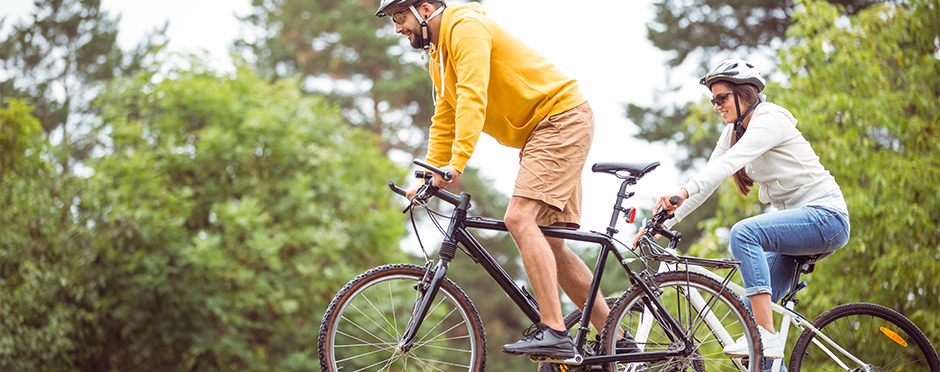
The Basics of How to Fit a Bike
1 CommentAs the weather turns warmer, many people go outdoors for their workouts. Cycling is a great outdoor activity, providing a cardiovascular workout that places minimal impact through the joints. In this way, cycling can be a good option for those who do not tolerate higher level impact activities, such as running. Cycling can also be an essential component to any cross training program.
Before you get peddling, it’s important to ensure that there is optimal fit between you and your bike. There are several considerations and adjustments to your bike that should be made to ensure you are ready to hit the road. A bike that fits you poorly can lead to pain and discomfort.
How Bikes Are Sized
Different types of bikes are sized differently and will have different fits. There are road bikes, mountain bikes and hybrid bikes. First you must decide on your biking goals and preferences to select which bike you want and then you can pick the desired size.
Frame Stand Over Height
Make sure you can straddle your bike with your feet flat on the floor wearing the shoes you plan to cycle in. You will straddle the frame of the bike, not the seat of the bike. For a quick guide to stand over height, there should be a 1-2 inch clearance from your inseam to the top tube of the bike.
Bike Seat Height
When your foot is at the bottom of your pedal stroke, there should be a slight bend in the leg. When your foot is in the 3 o’clock position, your knee should be aligned over the forefoot; you should be able to draw a line from your kneecap straight to the ball of your foot and through the center of the pedal. Your bike seat should be fairly parallel to the ground or possibly angled downward very slightly; do not angle the seat upward.
Tip: you should not be rocking side to side when you are pedaling.
Upper Body & Arm Position
You want your riding position to be comfortable with some bend in the arm (at the elbow) for shock absorption. You do not want to be reaching too far to apply the brakes. You should feel like you could comfortably tap your fingers on your handlebar if you are at the right distance. Likewise, you should not have to adjust your position on the bike seat to reach the handles or brakes.
It is personal preference whether you wish to ride in a more upright position or more in a forward lean position. Any position with a forward lean will improve your efficiency. Depending on your preference, your handle bar height may need to be raised or lowered to a comfortable position for you.
Signs Something is Not Right
Riding a bike should be comfortable. Pain, numbness, or tingling in the hands, feet, or buttocks are a sign that something within your bike does not fit right. This could be a quick adjustment or you might feel more comfortable seeking out tips from a physical therapist or local bike shop. A proper position on a bike is one that is easy to maintain. Your hands should feel comfortable and you shouldn’t feel the need to fidget in the seat.
Remember, as you get more comfortable cycling, your bike preference or goals may change. If you switch bikes, make sure to undergo a new bike fit.
Find your closest Athletico or visit us online for a free assessment should you sustain injury while cycling.
The Athletico blog is an educational resource written by Athletico employees. Athletico bloggers are licensed professionals who abide by the code of ethics outlined by their respective professional associations. The content published in blog posts represents the opinion of the individual author based on their expertise and experience. The content provided in this blog is for informational purposes only, does not constitute medical advice and should not be relied on for making personal health decisions.

1 Comment
Cynthia Goldberg
As a cyclist I was glad to see your advice on fitting the bike it is a reminder of the correct fit.